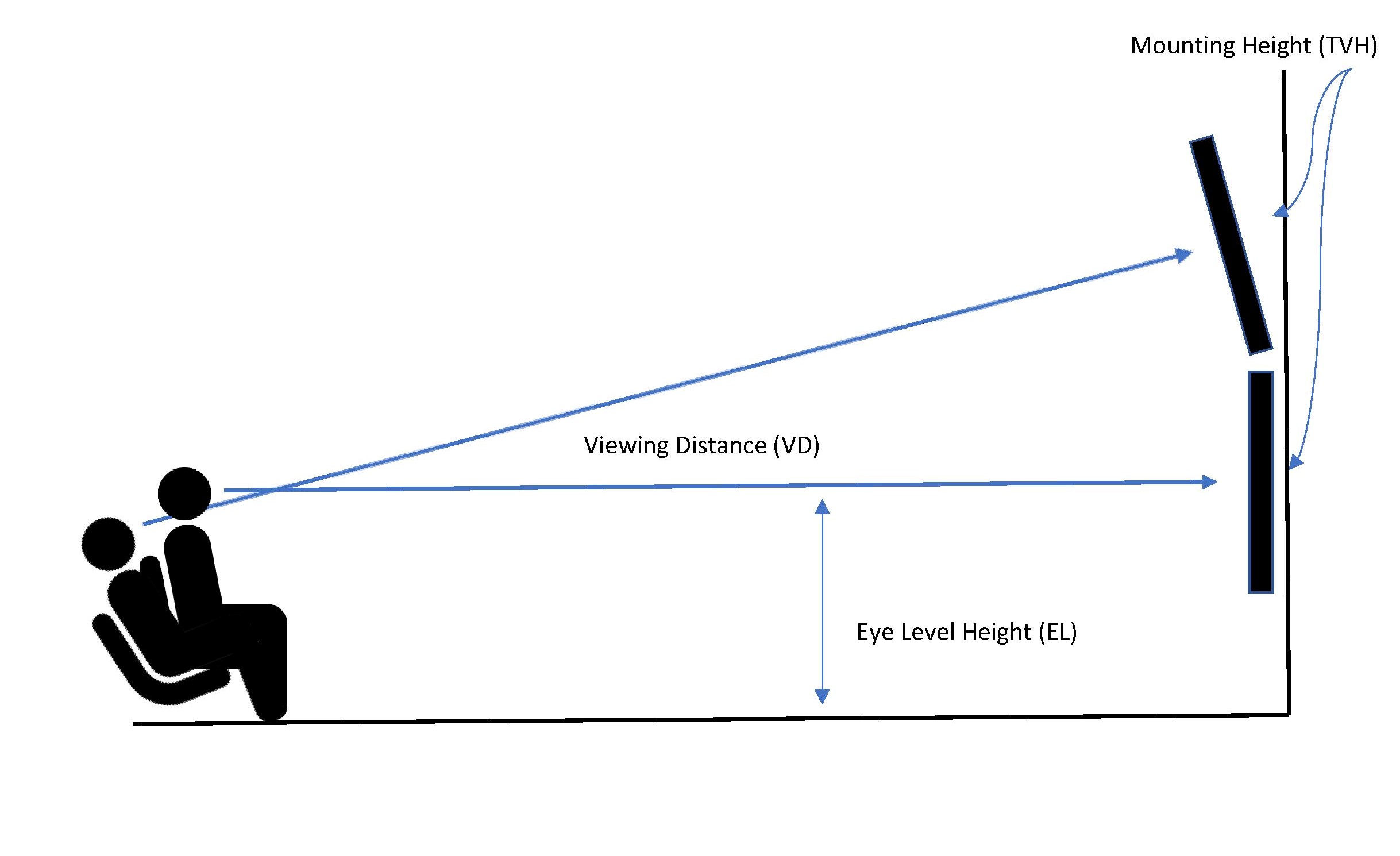Horizontal Viewing Angle
Even though our peripheral vision allows us to see a field-of-vision that is nearly 180° wide, we aren’t really able to focus on images outside of a much smaller angle. You will also tend to focus on images right in front of you as opposed to those on the periphery. Your screen should be inside of that angle for as immersive an experience as possible.
The Society of Motion Picture and Television Engineers (SMPTE) sets that viewing angle at 30° based on an aspect ratio of 16:9, while the THX standard for the farthest seat in the center of the theater is a little wider at 36° (based on an aspect ratio of 2.39:1). The standard for home theater is quickly becoming 2.39:1 so that’s the angle we should be concerned with.
If you sit too close to very large televisions, portions of the screen will fall outside of the 36° angle, forcing your eyes to move more than necessary, causing them to fatigue. But, on the flipside, as resolutions increase, the viewing angle increases proportionally. With a 4k display you may even be able to stretch that angle out to 50° or more. There really is no perfect answer to viewing angle for every situation, but if you try to stay close to 36° everyone in your theater should have a great viewing experience.
That takes care of the horizontal placement of the television, here's how to calculate for vertical placement.
1. Calculate Viewing Distance
Viewing Distance (VD) is the distance from where a viewer sits to the wall the television is to mounted on. TVS is the horizontal television size.
VD = TVS*1.67
42” = 5.8 feet
55” = 7.5 feet
65” = 9 feet
75” = 10.5 feet
2. Calculate Eye Level Height
Measure the height from the floor to your eye level (EL) while you are sitting in your viewing seat. Note that if you will be reclining, the EL distance will be different than if you are sitting straight up, so try to find your most comfortable viewing position for this measurement.
3. Calculate Television Mounting Height
Next, calculate the mounting height to the television's center point. We’ll use a measured sitting height of 36” as an example.
EL+(VD*.22) = TVH
In our example for a 65” television:
36+(109*.22) = 59.98” (round up to 60”)
This sets the center point mounting height of your 65” television at 60” from the floor. If you have multiple rows, with one or more rows set on a riser, take the average EL height and use that for your calculation.

Make sure you follow the manufacturer’s instructions exactly when installing your television mounting bracket, and then get yourself ready for a totally immersive theater experience (we’ll cover setting your speakers to your television in a future article).



